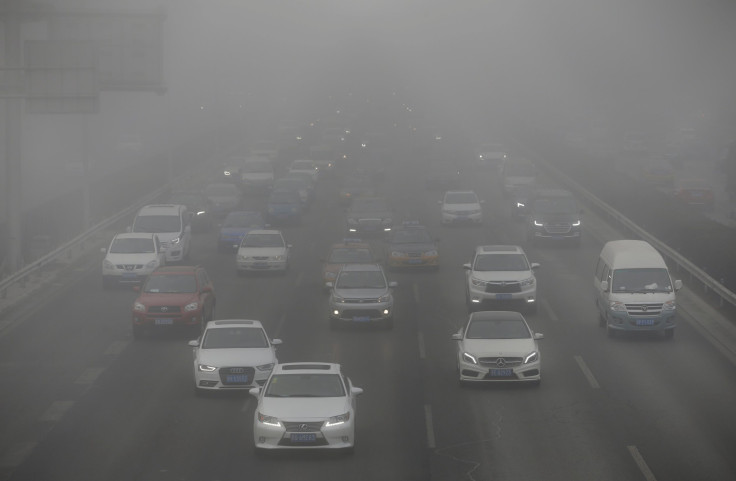High Levels Of Vehicle Pollution Exposure May Lead To Age-Related Vision Problem, Study Says

Exposure to high levels of vehicle pollution or traffic pollution is likely to affect the central vision of a person later in life, according to a study. The study suggested that exhaust exposure could increase the risk of developing a vision problem called age-related macular degeneration (AMD).
The study, published in the Journal of Investigative Medicine, focused on the relationship between traffic-related air pollutants and the increased risk of AMD.
AMD is a vision problem that affects the central area of the retina called macula, which plays a vital role in providing central, sharp vision and also helps in seeing the objects more clearly. It is the main cause of vision loss among people in the United States. According to National Eye Institute, around 2.5 percent of white Americans aged 50 and above as well as over 14 percent of white adults aged 80 and above are affected by AMD.
The study, led by a group of researchers from the China Medical University in Taiwan, suggested that high levels of exposure to vehicle-related pollution can double the risk of AMD and those who get affected by it will face problem seeing straight ahead.
For the study, the researchers observed a total of 39,819 people for 11 years from 2000 to 2010. The participants for the study were selected from the Longitudinal Health Insurance Database (LHID) and most of them aged 50 and above at the beginning of the study.
The researchers also analyzed the air-quality of the participants’ surroundings with the information collected from the Taiwan Air Quality Monitoring Database (TAQMD). At the start of the study, none of the participants suffered from AMD or had any signs of it.
During the study, the participants were divided into four groups depending on the levels of their exposure to vehicle-related air pollution. At the end of the study, the research team found that a total of 1,442 participants developed AMD.
After the analysis, the researchers also found that those who were getting exposed to high levels of traffic-related air pollution had 84 percent higher chances of developing AMD compared to the ones living in places with low levels of exhausts.
While analyzing the results, the researchers took into consideration various other factors that can lead to AMD, such as gender, age, underlying illnesses and household income.
Meanwhile, the study’s co-author Suh-Hang Hank Juo suggested a way to protect the eyes from vehicle-related air pollution and prevent AMD.
“If we can reduce exposure and try not to be in the highest exposure group, the risk can be significantly reduced. Therefore, do not go jogging on the road side when there are lots of cars and try not to go outside during the heavy traffic hours,” Juo, who is also a distinguished professor at the China Medical University told Reuters.
© Copyright IBTimes 2025. All rights reserved.





















